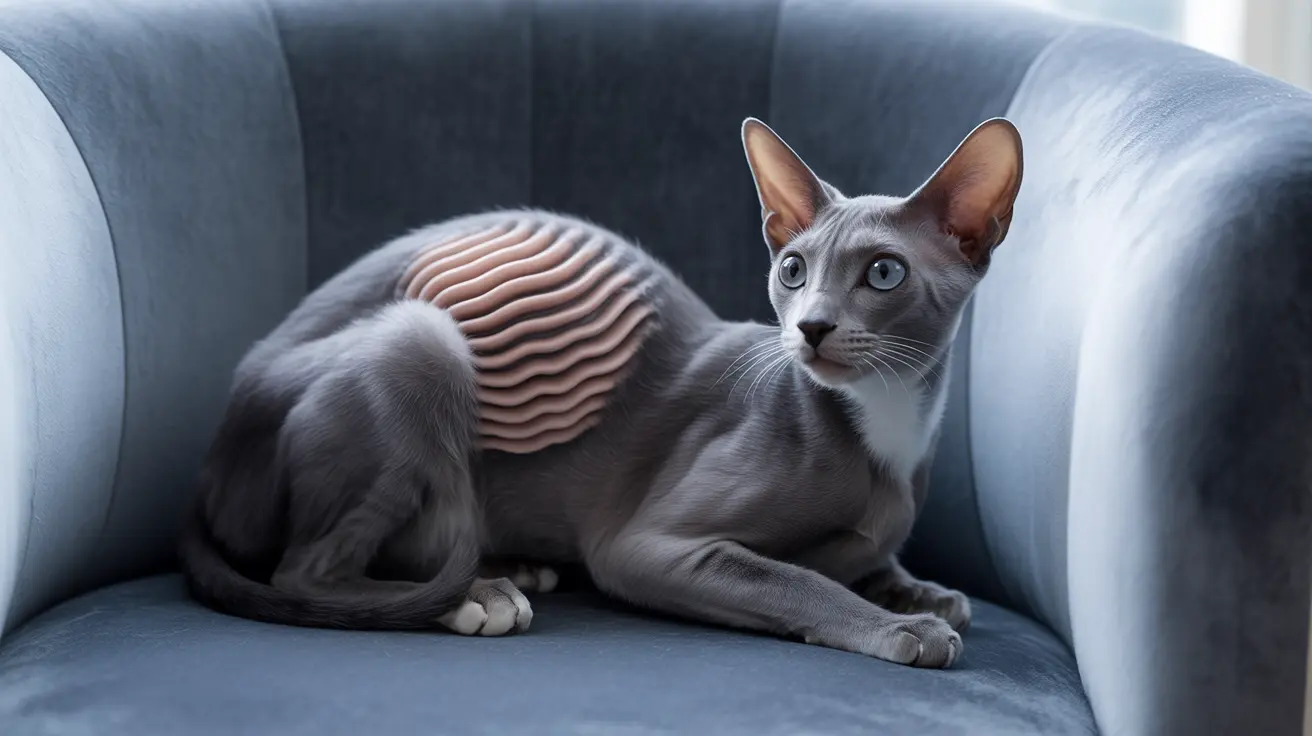If you've noticed your cat exhibiting sudden twitches, unusual movements, or repetitive behaviors, you might wonder if cats can have Tourette's syndrome. While these behaviors may seem similar to human tics, it's important to understand that cats cannot develop Tourette's syndrome – a condition that is uniquely human.
However, cats can develop conditions that may appear similar to tics, most notably Feline Hyperesthesia Syndrome (FHS). Let's explore what's really happening when cats display these unusual behaviors and how they differ from human conditions like Tourette's.
Understanding Feline Hyperesthesia Syndrome (FHS)
Feline Hyperesthesia Syndrome, sometimes called "twitchy cat syndrome" or "rolling skin disease," is a complex condition that can cause behaviors that might resemble tics. This condition primarily affects cats between 1-5 years of age and may be more common in certain breeds, particularly Oriental cats like Siamese and Persian.
Unlike Tourette's syndrome in humans, FHS episodes are typically triggered by specific stimuli and occur in distinct episodes rather than as constant, involuntary tics. These episodes usually last from a few seconds to several minutes.
Signs and Symptoms of FHS
The symptoms of FHS can vary significantly between cats but often include:
- Rippling or rolling skin, especially along the back
- Sudden jumping, running, or frantic behavior
- Excessive vocalization or meowing
- Dilated pupils during episodes
- Self-directed aggression or excessive grooming
- Tail chasing or fixation
- Heightened skin sensitivity, especially to touch
What Causes These "Tic-Like" Behaviors in Cats?
While the exact cause of FHS remains unknown, veterinary experts have identified several potential contributing factors:
- Neurological issues, possibly related to seizure activity
- Anxiety or stress-related behavioral disorders
- Skin conditions or allergies
- Genetic predisposition
- Environmental triggers
Diagnosis and Treatment Options
Diagnosing FHS requires a thorough veterinary examination to rule out other conditions that might cause similar symptoms. Your vet will likely perform various tests to exclude possibilities like:
- Flea infestations or allergies
- Spinal or neurological conditions
- Skin diseases
- Behavioral disorders
Treatment typically involves a multi-faceted approach that may include:
- Anti-anxiety medications or antidepressants
- Environmental enrichment and stress reduction
- Treatment of any underlying skin conditions
- Regular exercise and mental stimulation
- Maintaining consistent daily routines
Prevention and Management
While you can't prevent FHS entirely, you can help manage your cat's symptoms by:
- Creating a calm, enriching environment
- Maintaining regular feeding and play schedules
- Reducing potential stress triggers
- Providing appropriate scratching posts and toys
- Regular veterinary check-ups
Frequently Asked Questions
Can cats actually have Tourette's syndrome or similar tic disorders?
No, cats cannot develop Tourette's syndrome as it is a condition unique to humans. However, they can develop FHS, which may present with tic-like behaviors but has different underlying causes.
What are the common signs and symptoms of feline hyperesthesia syndrome (FHS) in cats?
Common signs include rippling skin, sudden bursts of activity, excessive grooming, tail chasing, dilated pupils, and heightened sensitivity to touch, particularly along the back.
How do veterinarians diagnose feline hyperesthesia syndrome and rule out other conditions?
Veterinarians use a process of elimination, conducting physical examinations, neurological tests, and ruling out other conditions like allergies, parasites, or skin diseases before diagnosing FHS.
What causes feline hyperesthesia syndrome, and is it related to neurological or behavioral issues?
The exact cause is unknown, but FHS may be related to neurological issues, stress, anxiety, or a combination of factors. It could have both behavioral and neurological components.
How can I manage or treat my cat's feline hyperesthesia syndrome to reduce twitching and discomfort?
Management typically involves a combination of medication (if prescribed by a vet), environmental enrichment, stress reduction, and maintaining consistent routines. Each treatment plan should be tailored to the individual cat's needs.
If you notice your cat displaying unusual twitching or behavioral changes, consult with your veterinarian for proper diagnosis and treatment options. While these symptoms may be concerning, most cats with FHS can lead happy, comfortable lives with appropriate management and care.






